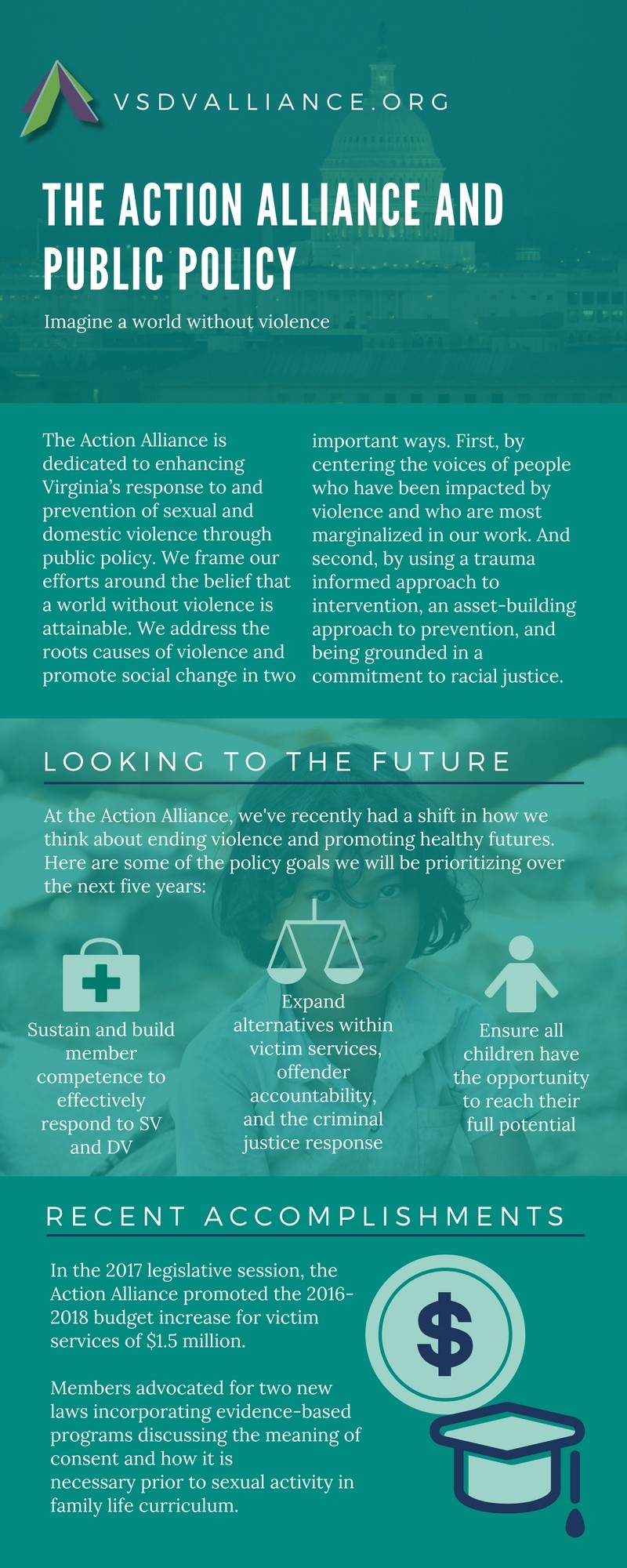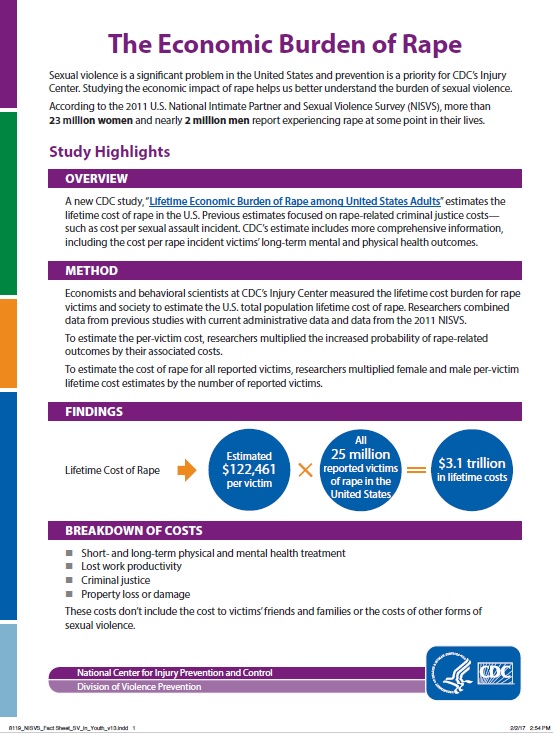Resources Library:
Start a Search:
The Action Alliance and Public Policy
The Action Alliance is dedicated to enhancing Virginia's response to and prevention of sexual and domestic violence through public policy. This infographic highlights a few of our public policy priorities for the next five years.

The Alarming Truth Behind the Rising Mortality Rate in the U.S.
While the global maternal mortality rate (MMR) decreased by 36.6 percent between 2000 and 2015, the U.S. MMR increased by 16.6 percent. The United States was one of six countries and the only developed country to see an increase in maternal mortality during this time period.
To learn more, check out the infographic below designed by Bradley University’s online Master of Science in Nursing program.
The Economic Burden of Rape - a CDC Report
 Sexual violence is a significant problem in the United States and prevention is a priority for CDC’s Injury Center. Studying the economic impact of rape helps us better understand the burden of sexual violence. According to the 2011 U.S. National Intimate Partner and Sexual Violence Survey (NISVS), more than 23 million women and nearly 2 million men report experiencing rape at some point in their lives.
Sexual violence is a significant problem in the United States and prevention is a priority for CDC’s Injury Center. Studying the economic impact of rape helps us better understand the burden of sexual violence. According to the 2011 U.S. National Intimate Partner and Sexual Violence Survey (NISVS), more than 23 million women and nearly 2 million men report experiencing rape at some point in their lives.
A new CDC study, “Lifetime Economic Burden of Rape among United States Adults” estimates the lifetime cost of rape in the U.S. Previous estimates focused on rape-related criminal justice costs—such as cost per sexual assault incident. CDC’s estimate includes more comprehensive information, including the cost per rape incident victims’ long-term mental and physical health outcomes.
Click below to download the report of the study or the summary infographic.
The Gold Standard? Comparing Privacy in HIPAA, VAWA, FVPSA, & VOCA webinar
(as presented by NNEDV and the Safety Net team on 10/18/2016)
HIPAA, VAWA, VOCA, and FVPSA all require protection of identifying information. But are they the same? Which is more protective? Is there a "gold standard" to follow? NNEDV's Safety Net team took an indepth look at the similarities and differences between privacy standards set by HIPAA and those required by VAWA, FVPSA, and VOCA, offering expert insight into how to check if programs are actually following appropriate and applicable privacy laws regarding client information and data, as well as clarity about the underlying goals of these federal laws and understand how they differ.
If you were unable to attend this webinar, the recorded version of the webinar is available at https://youtu.be/qCJagGiGiMQ.
Additional materials, handouts, and templates that you can adapt (such a model release forms and MOUs) can be found in their Confidentiality Toolkit at www.techsafety.org/confidentiality.
THE IMPORTANCE OF UNDERSTANDING TRAUMA-INFORMED CARE AND SELF-CARE FOR VICTIM SERVICE PROVIDERS
"Understanding trauma can be complicated. For victims of sexual assault, domestic violence, dating violence, and stalking, trauma can stem from an isolated incident, from repeated incidents over a lifetime, or from a pattern of ongoing violence. And, this violence and trauma can be compounded by multi-generational and/or historical trauma. Exposure to “cumulative emotional and psychological wounding over the lifespan and across generations, emanating from massive group trauma experiences” such as colonization, war, or genocide, can magnify an already devastating crime. It is important for services providers to remember that because of historical trauma, many survivors of violent crime, such as those from African American, immigrant and American Indian/Alaska Native communities, are forced to confront multiple layers of traumatic experiences as they recover and heal."


